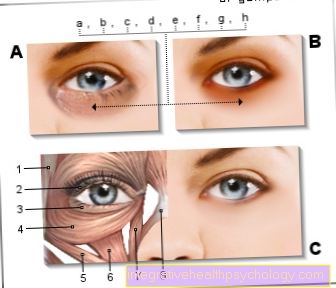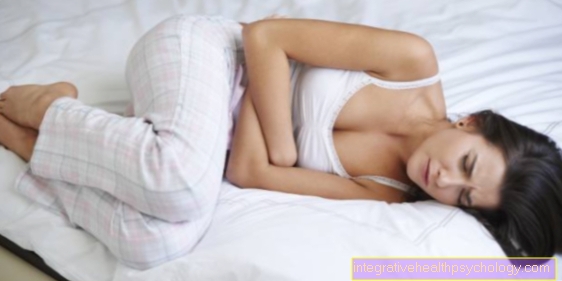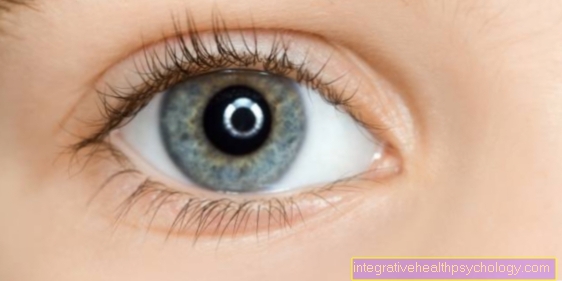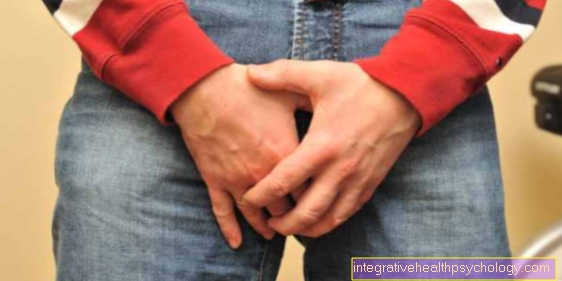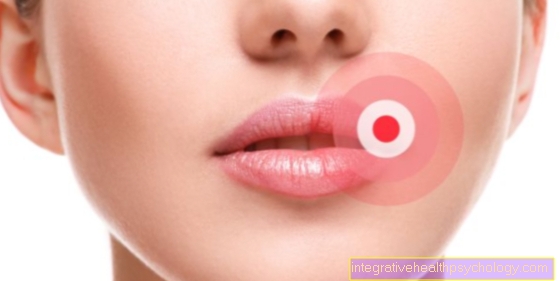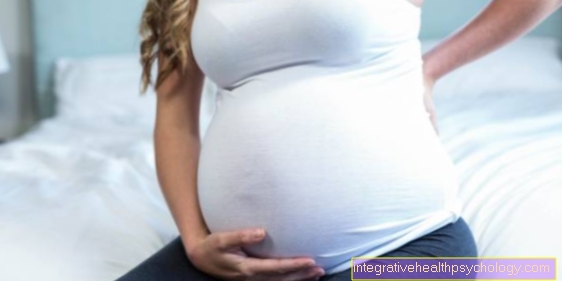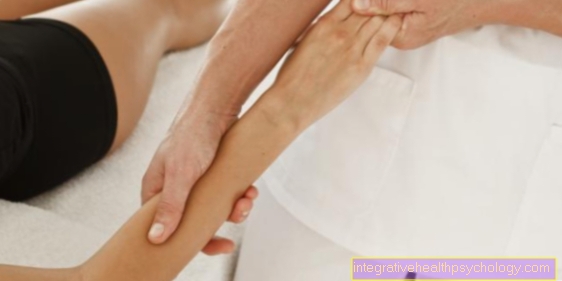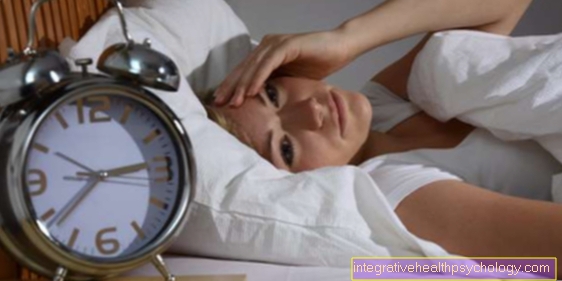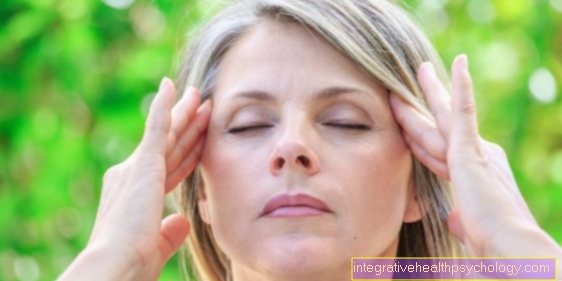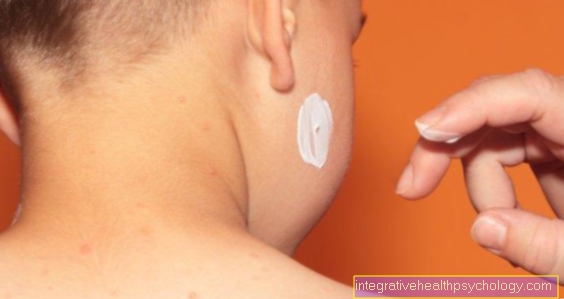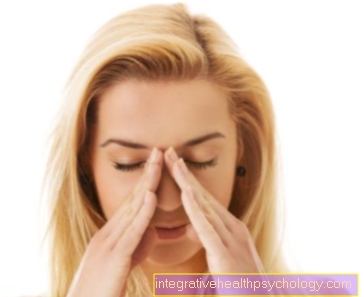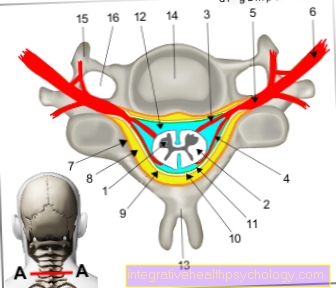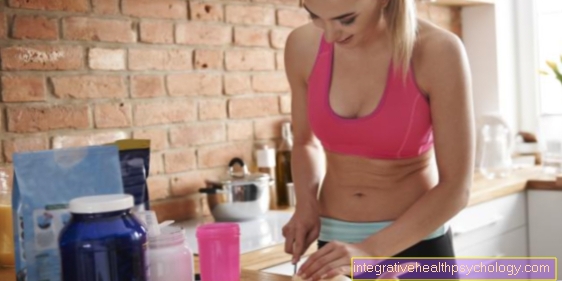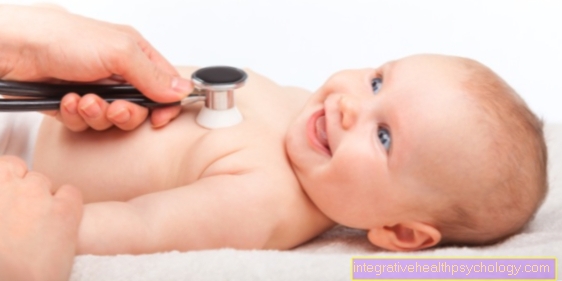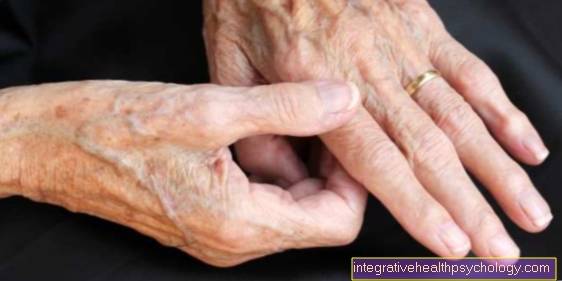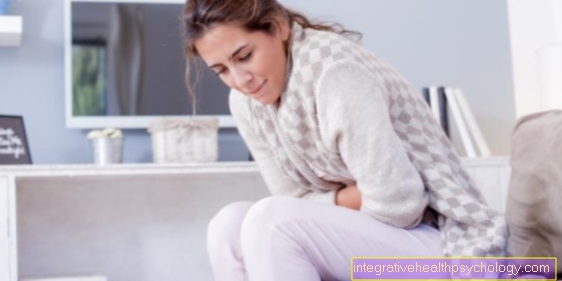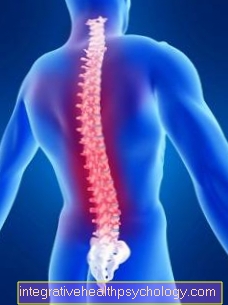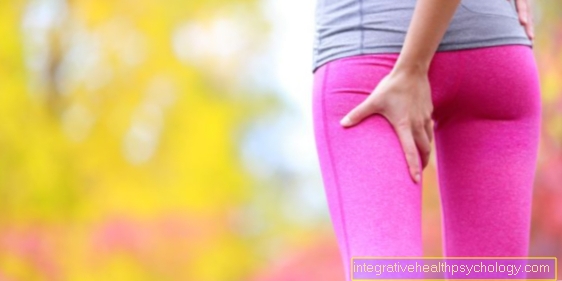Coloring hair during pregnancy
introduction
In order not to negatively influence the development of individual organ systems and the growth of the unborn child, many expectant mothers think about the use of cosmetics.
Most expectant mothers are primarily concerned with the question of whether hair coloring can lead to malformations in the unborn child.
It is commonly said that the use of hair dyes, bleaching and / or hair tints should absolutely be avoided during pregnancy. In fact, hair dyes, especially bleaching, usually contain chemicals that can be potentially hazardous to health.
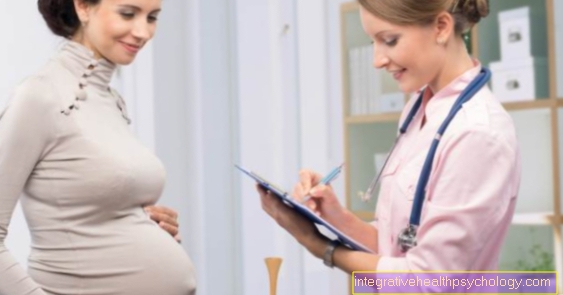
Risks of hair coloring during pregnancy
The question of whether coloring hair during pregnancy is actually safe has not yet been conclusively clarified.
However, it can be assumed that coloring the hair and using bleaching or hair tints is largely harmless even during pregnancy.
The reason for this assumption is the fact that so far no cases have been investigated in which development damage caused by the substances in a hair dye or a bleaching could be detected. Regardless of whether you are pregnant, it can be said that no chemical found in hair dyes or hair tints is highly toxic.
Especially in Europe, products that are used for tinting, bleaching or coloring hair are subject to particularly high safety standards.
For this reason, highly toxic chemicals for coloring hair must not be used on pregnant women or non-pregnant women.
In chemical hair dyes, so-called oxidation hair dyes, aromatic amines (e.g. p-phenylenediamine) are also contained within Europe, but according to the law, these must be combined with a coupler substance.
For this reason, the aromatic amines contained in the hair dye do not pose a health risk.
The likelihood of allergic reactions occurring is also significantly reduced by the combination of aromatic amines and coupler substances. As a result, it is very likely that dyeing your hair is completely safe even during pregnancy.
While studies on pregnant women regarding the possible harmful effects of chemicals for coloring the hair are not permitted, the course of pregnancy in hairdressers has been observed for years.
In this way, an attempt was made to find out whether certain malformations occur more frequently in children of hairdressers. Based on these observations, no differences in the development between hairdressers and pregnant women from other occupational groups could be determined so far.
For this reason, the products used in this country for coloring, tinting or bleaching hair are classified as relatively harmless even when used during pregnancy.
The substances used are not considered particularly healthy either.
Regardless of the question of whether coloring the hair during pregnancy can be harmful to the unborn child, it must be borne in mind that the reaction of the skin surface to external stimuli can change.
Women tend to suddenly develop new intolerances or allergies, especially during pregnancy. For this reason, products for tinting, bleaching and coloring hair should definitely be tested on a small area of skin about one day before use.
If skin reddening and / or blisters develop after the test, the product must not be used under any circumstances.
Otherwise, there is a risk that a strong allergic reaction will occur. This can be dangerous for both the expectant mother and the unborn child during pregnancy.
Expectant mothers who want to be on the safe side, however, should refrain from coloring their hair completely during pregnancy.
The use of bleaching agents and / or hair tints should also be avoided in case of doubt during pregnancy.
This principle applies especially during the first trimester of pregnancy. This is because the fetus is considered to be particularly sensitive during this stage of pregnancy.
If, contrary to the previous assumption, it should happen that potentially harmful substances get through the placenta when dyeing the hair, an impairment of the fetus cannot be ruled out, especially during the first trimester of pregnancy.
Prevent possible risks
The subject of hair coloring and pregnancy still unsettles many women.
However, since expectant mothers also pay attention to their appearance and do not want to go without coloring their hair for months, at least some protective measures should be taken.
If you are known to be allergic to one or more of the ingredients in the coloring agent, you should refrain from coloring your hair during pregnancy. A pronounced allergic reaction can result in serious health problems for the mother and / or child. In addition, it must be taken into account that pregnancy often leads to the development of new allergies and hypersensitivities.
Women who do not want to do without dyeing their hair during pregnancy should therefore test the dye on a small area of skin about 24 hours before use. If skin redness and / or blisters develop during the course of this test, the product must not be used under any circumstances. Since the various ingredients of the means for coloring hair can get into the organism via the scalp as well as via the skin surface, direct skin contact should be avoided as far as possible. For this reason, women who do not want to do without dyeing their hair during pregnancy should not try on themselves.
In order to minimize direct skin contact with the hair dye, dyeing of the hair during pregnancy should only be done by a trained hairdresser. In addition, the absorption of potentially harmful substances through the scalp can be influenced by the choice of coloring process.
While the dye must be applied directly to the scalp when tinting, bleaching and dyeing the entire hair, a certain distance from the head surface should be maintained when setting so-called strands of film.
This reduces the likelihood that potentially harmful substances will enter the body through the scalp.
For this reason, women who do not want to forego coloring their hair during pregnancy should first switch to foil strands if possible.
If a visit to the hairdresser is not possible and the mother-to-be will dye the hair herself, she should always wear suitable gloves. Gloves that are impervious to the ingredients in the hair dye can be purchased from specialty hairdressing stores. In this way, too, the probability of substances entering the organism via the skin surface of the hands can be significantly reduced. In addition, the room where the hair is colored must be ventilated both during and after the application of the color. Otherwise, large amounts of the chemicals used will enter the expectant mother's body via the respiratory tract and lungs.
However, the absorption of chemicals via the respiratory tract cannot be completely avoided even through ventilation.
In addition, women who do not want to forego coloring their hair during pregnancy should always bear in mind that the exposure time for the hair dye must be kept as short as possible.
The choice of coloring agent used can also help reduce any possible risk for both mother and child.
While bleaching in particular has a large number of highly potent chemicals, darker hair colors are considered to be much gentler. In addition, it can make sense to use certain natural hair dyes during pregnancy.


